Florence, at the Museo Novecento, André Butzer's major exhibition tracing the artist's career
A major exhibition dedicated to German artist André Butzer (Stuttgart, 1973): this is the one organized by the Museo Novecento in Florence. Liebe, Glaube und Hoffnung (“Love, Faith and Hope”), curated by Sergio Risaliti, is hosted in the halls of the museum from March 1, 2024 to June 9, 2024, and in addition the section ... und der Tod ist auch ein Leben (“... and death is also a life”) will be presented at the Museo Stefano Bardini from March 22 to June 9, 2024. This two-location exhibition offers an opportunity to explore the entire artistic journey of André Butzer. Butzer’s artistic practice comes to life through a fusion of European expressionism and vibrant American popular culture. Alongside such giants as Jawlensky, Munch, and Kirchner, key figures such as Henry Ford and Walt Disney emerge in Butzer’s biography and artistic education. Also not to be overlooked is the decisive influence of Cézanne and Matisse, painters who contributed to the foundation of artistic modernism and fascinated the artist from his youth.
The exhibition Liebe, Glaube und Hoffnung takes place in the ground floor rooms of the Former Leopoldine Complex, and draws inspiration from Paul’s first letter to the Corinthians (13:13). The exhibition presents about 25 works spanning the entire career of the artist, who, in addition to painting and drawing, has also explored the world of poetry. The selection of works, made in close collaboration with Butzer himself, aims to highlight the deep connections between the past and present of his work. The central and recurring themes that characterize Butzer’s work are highlighted, exploring the dualisms between life and death, hope and despair, truth and falsehood, that so often permeate his works. This continuous and antithetical tension creates a dense fabric of meanings and references, which will be carefully and thoughtfully placed in the exhibition.
In addition, the selection is enriched by some previously unseen works, specially created for the occasion and exhibited for the first time at the Museo Novecento. Of particular note is the creation of the large canvas entitled Ohne Titel (Sternenmadonna) (“Madonna of the Stars”), placed in the space originally intended for the altarpiece inside the building’s former chapel.
The second part of the exhibition project arrives at the Museo Stefano Bardini on March 22, 2024 with ... und der Tod ist auch ein Leben, an evocative title inspired by Friedrich Hölderlin’s poem Nel bel blu (1808), a favorite of André Butzer. This exhibition is part of the exhibition cycle launched in 2016, the aim of which is to create a stimulating dialogue between the prestigious Florentine museum and some of the most important contemporary artists, from John Currin to Glen Brown, Ali Banisadr to Rachel Feinstein, and Nathaniel Mary Quinn. The section ... und der Tod ist auch ein Leben takes its cue from a nucleus of works created by the artist following a visit to the museum and the rich collection of the refined connoisseur and antiques dealer Stefano Bardini. The series of 22 paintings from 2022 reflects the dialogue between Butzer and the Museo Stefano Bardini, starting with the evocative atmosphere of the Sala delle Madonne, which the artist reinterpreted in an innovative way. This room holds an extraordinary collection of terracotta Madonnas, including some works of rare beauty such as Donatello’s Madonna dei Cordai and Madonna della Mela, treasures that Stefano Bardini always jealously guarded during his activity as an art dealer. The collection features works from the most active and significant Florentine workshops of the 15th century, from Verrocchio to Jacopo della Quercia, from Ghiberti to Desiderio da Settignano. The staging of the terracottas is reflected in the portraits created by the German artist and in the representation of the exhibition layouts. The comparison with portraiture from the Museum’s collection continues in the section of the exhibition set up in the Hall of Paintings. The exhibition itinerary also includes the presentation of a selection of drawings and watercolors in the Venetian Ceiling Room, where Butzer’s works will be exhibited alongside the Guercino Room, where a number of drawings and watercolors by Giovan Battista Tiepolo, his son Lorenzo and Piazzetta are preserved.
“The Museo Novecento welcomes André Butzer’s solo exhibition in Florence to its ground floor spaces,” writes curator Sergio Risaliti, artistic director of the Museo Novecento. “It is the first ever in an Italian public institution, an anthological journey to discover paintings and sculptures, from the 1990s to the present day. Like other German artists of the last decades - Georg Baselitz, Anselm Kiefer and Günther Förg, but also Gerhard Richter, Sigmar Polke and Albert Oehlen - Butzer also managed to combine the great Romantic and Expressionist tradition with modern pop and abstract influences, which have been very influential in the German art scene since the 1960s. [...] For the first time in the recent history of the institution, the artist was suggested to try his hand at the walls that design the exhibition route around the Renaissance cloister, a surface of considerable size, which has the appearance of a wall placed outdoors, like a public space to be walked through dazzled by the external light. Another unprecedented feature of the project is the commissioning of an altarpiece for the former church that sits at the heart of the museum, a space so beloved by artists in recent years, who have been confronted here with what survives of a certain sacred aura. In this chapel, designed for Eucharistic liturgies, retired in prayer the girls admitted to the Spedale di San Paolino - this was the ancient name of the former Leopoldine - young maidens rescued from the hardships, humiliation and violence they suffered in their families or in society renaissance [...] André Butzer is an artist who lives and creates in the certainty of the artistic mission and the even ontological power of art, which by detaching itself from industrial productions and the ephemeral spectacle of contemporary life proceeds toward truth and freedom.”
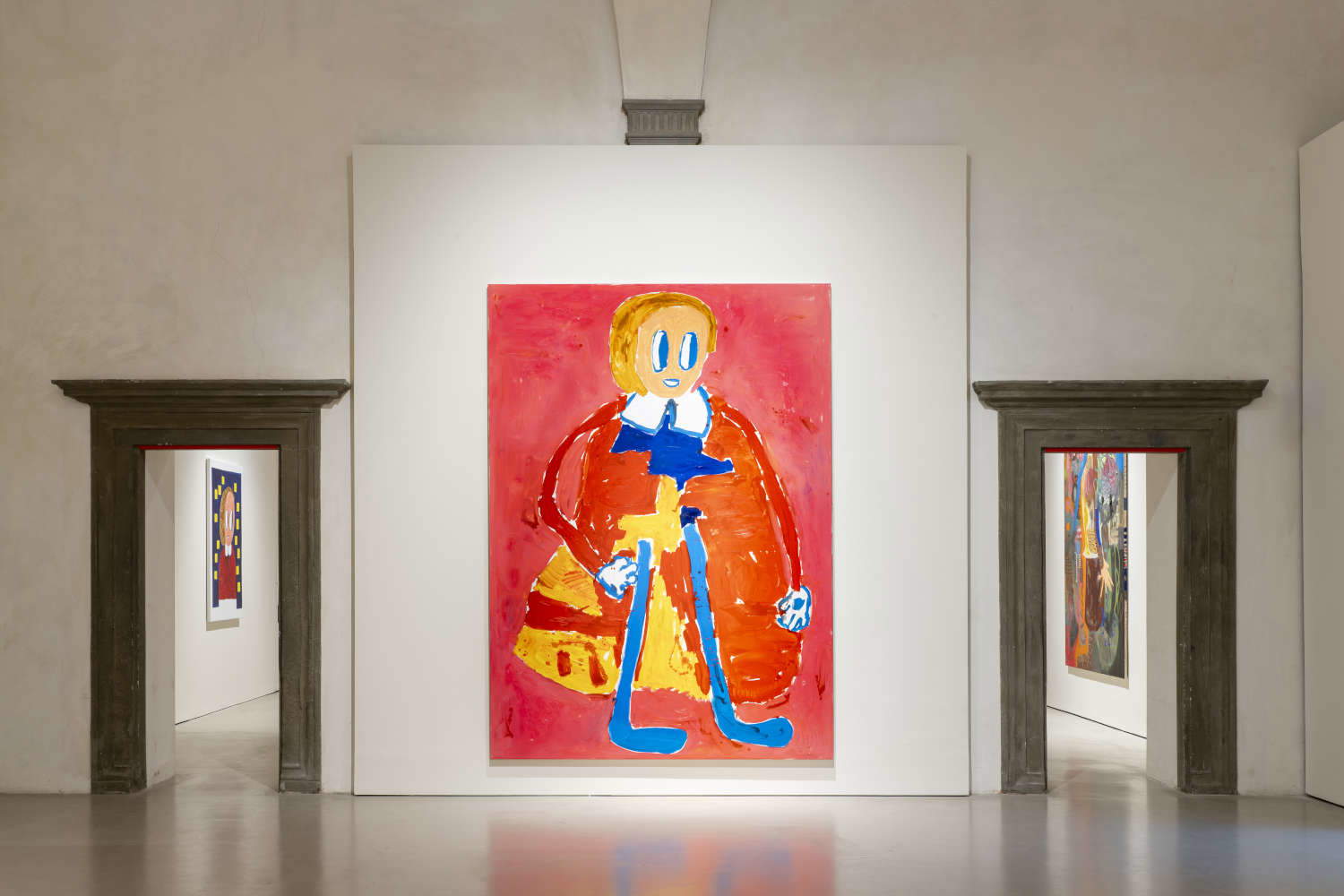
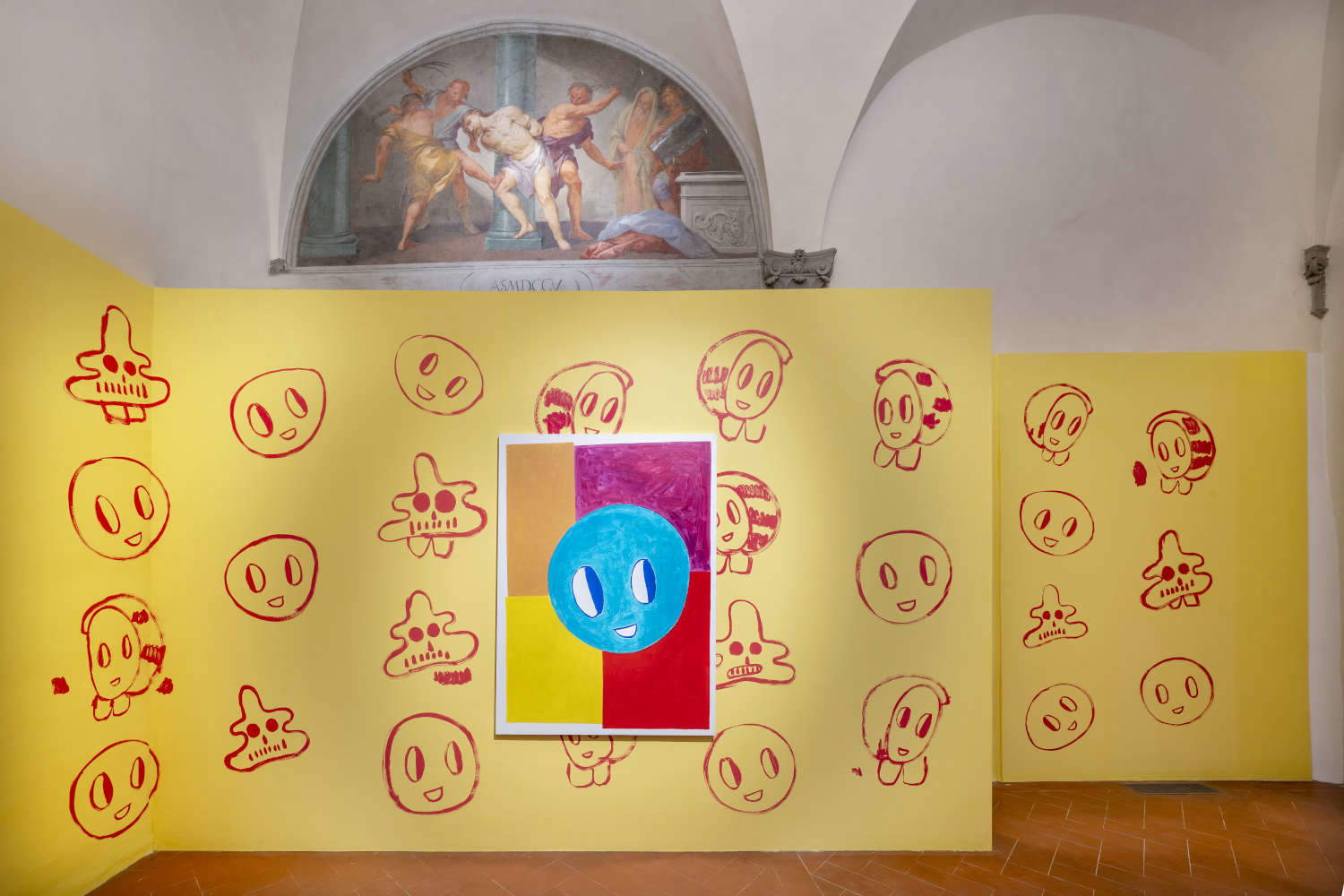
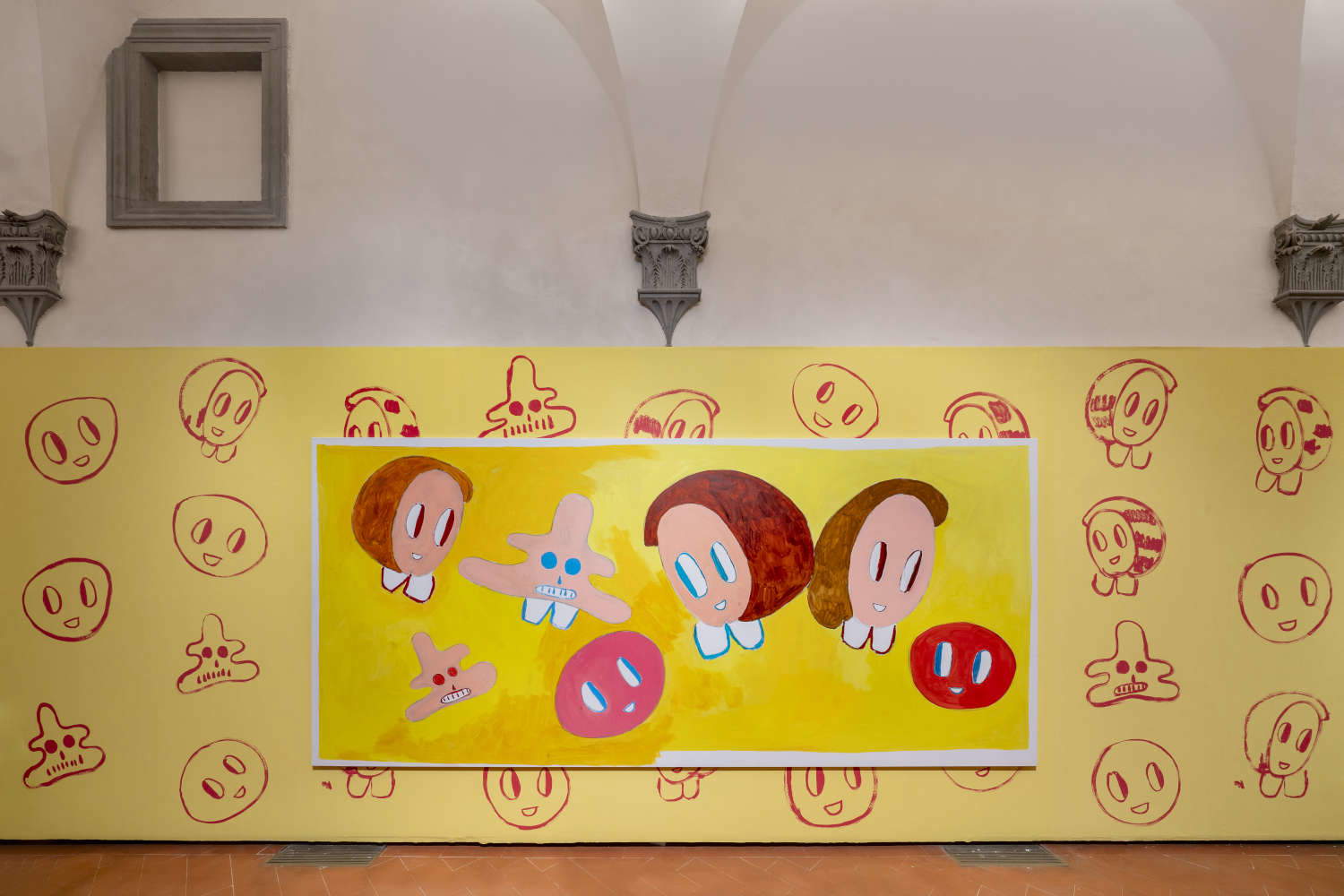
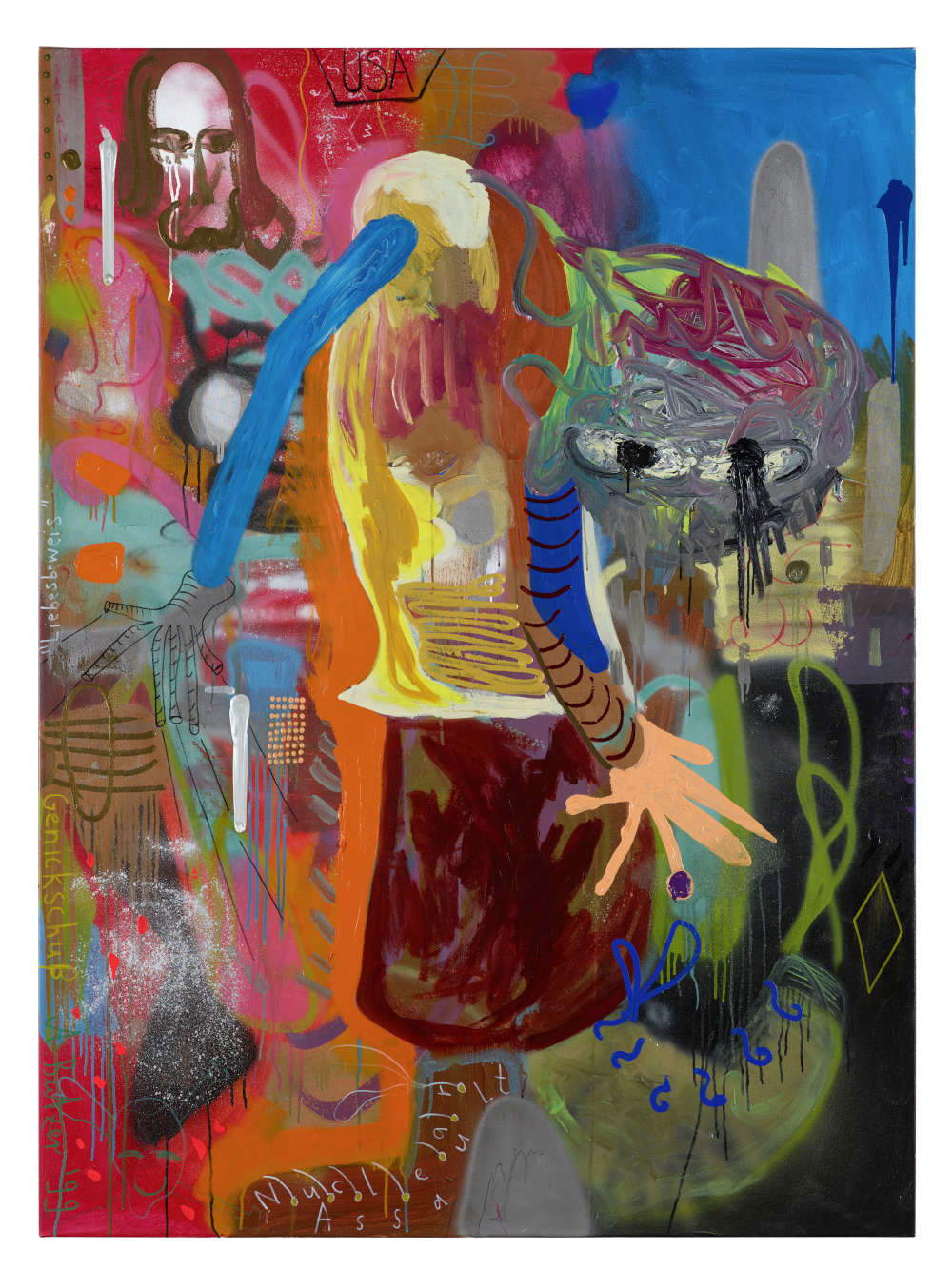
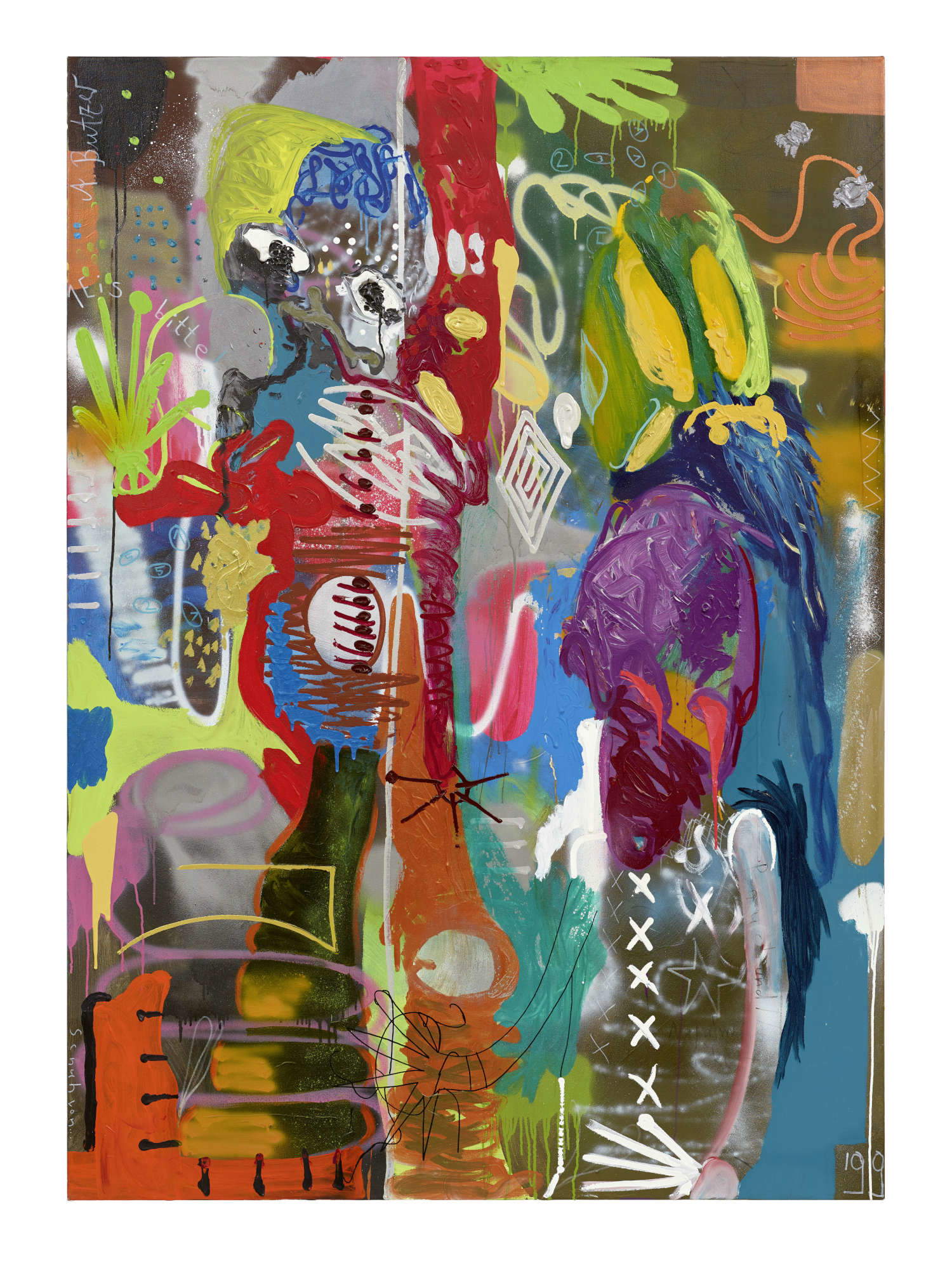
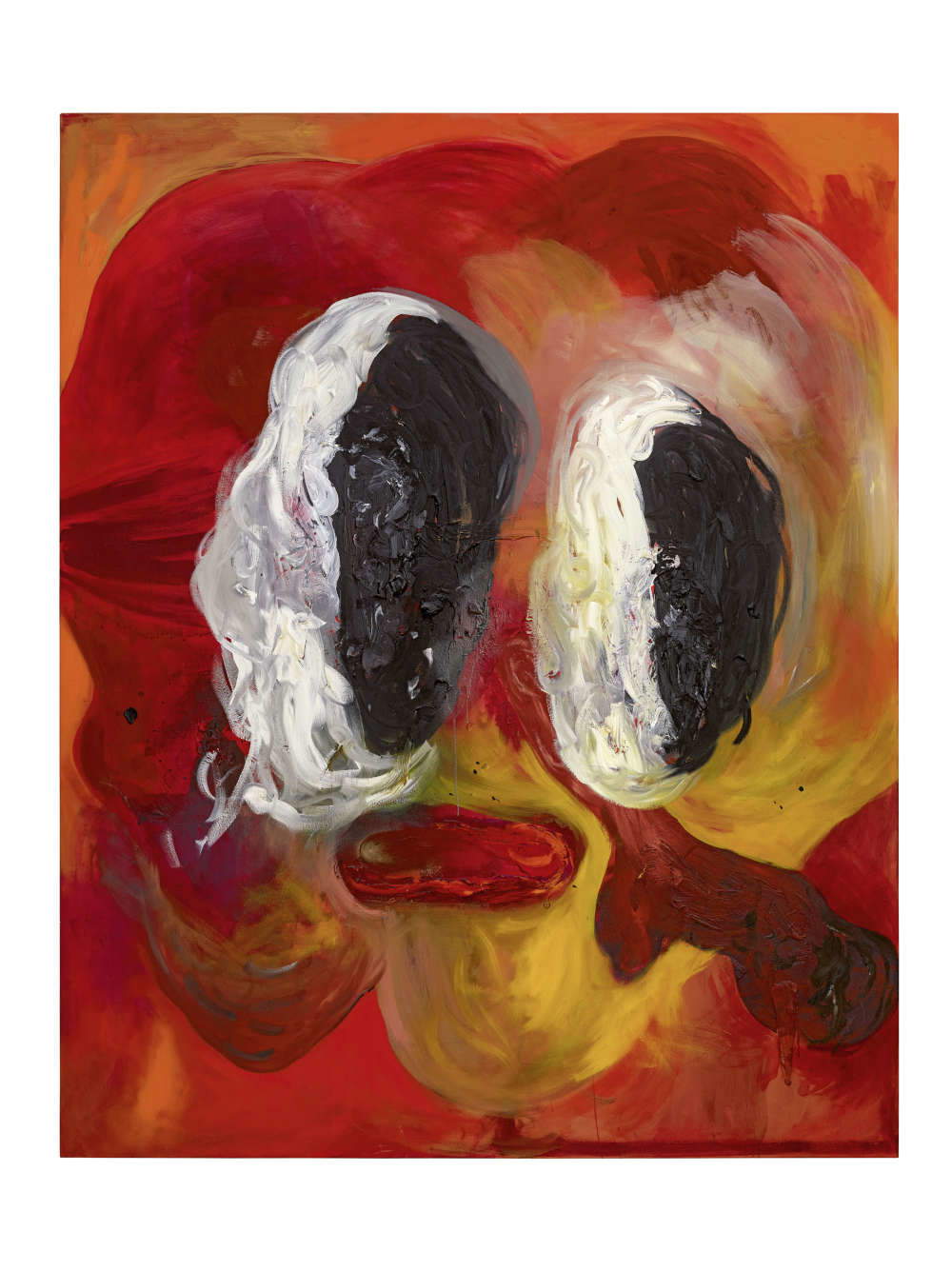
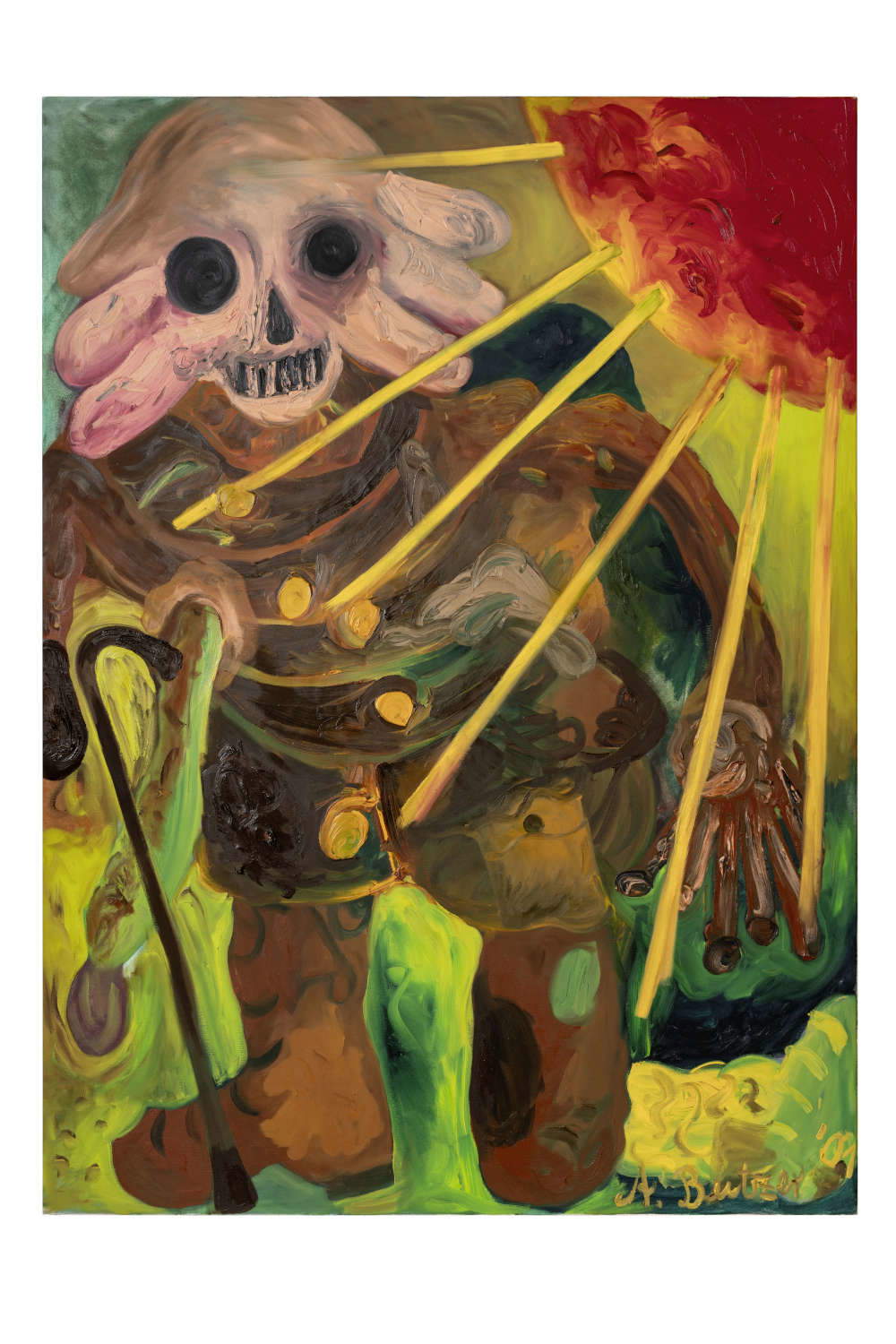
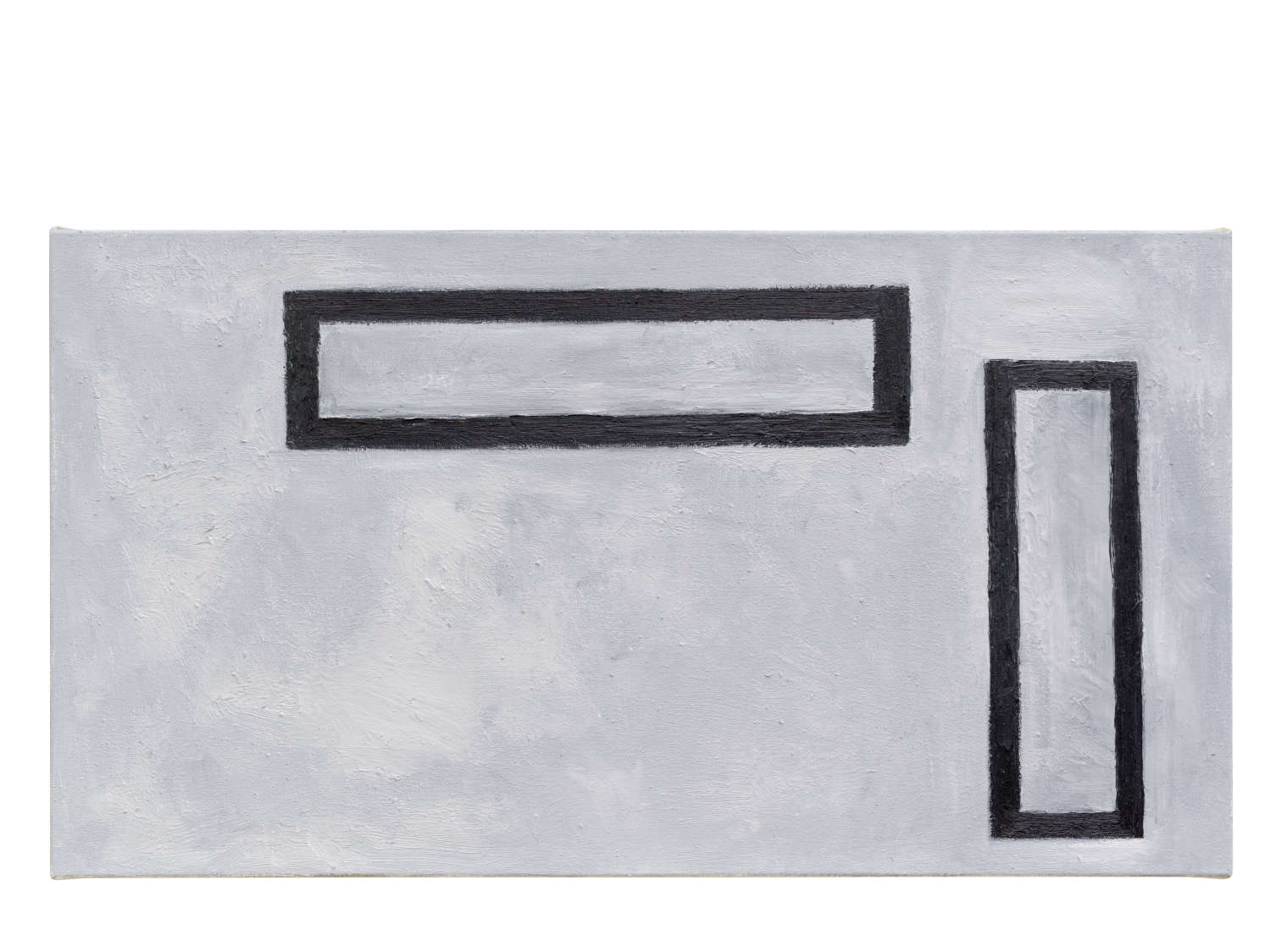
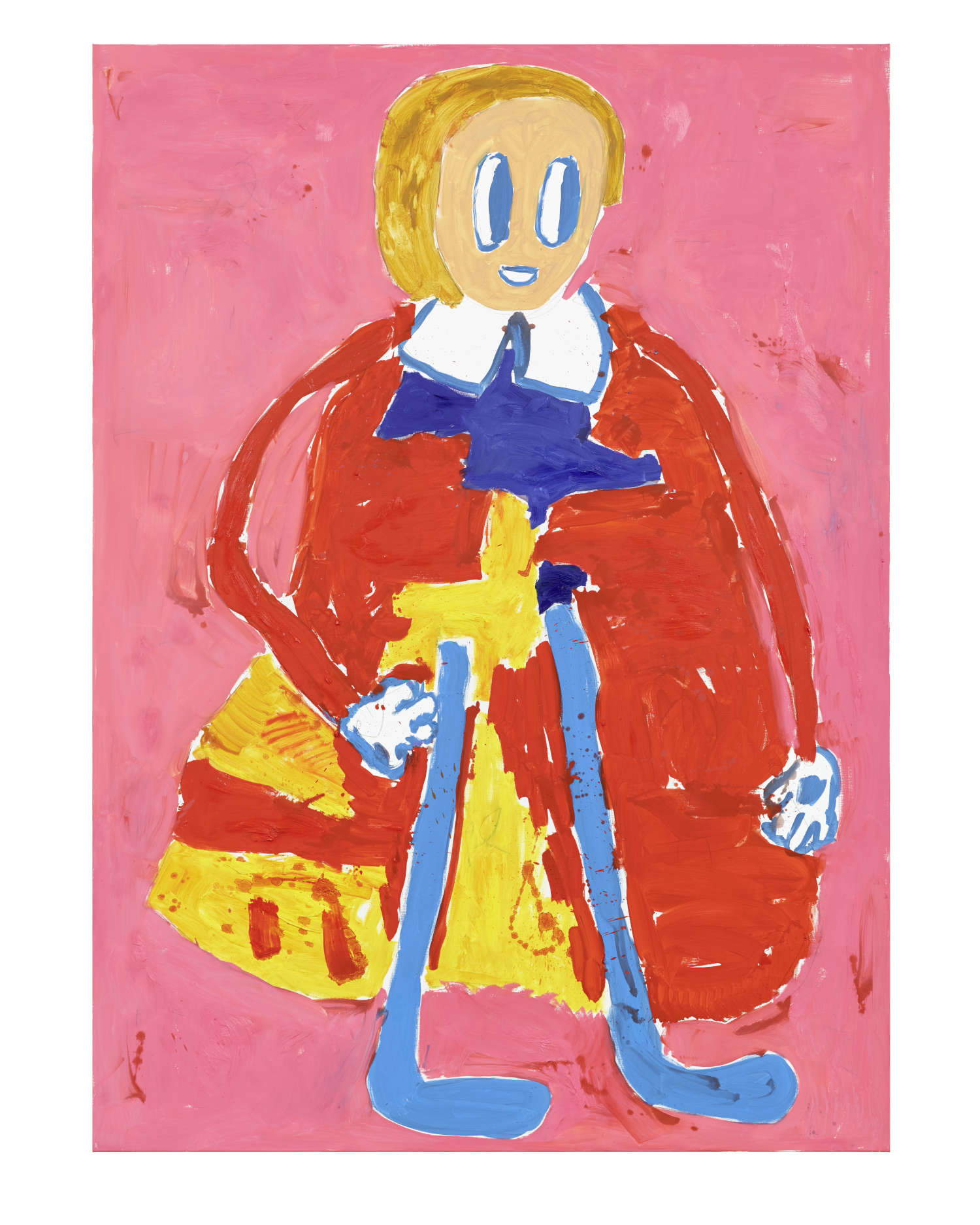
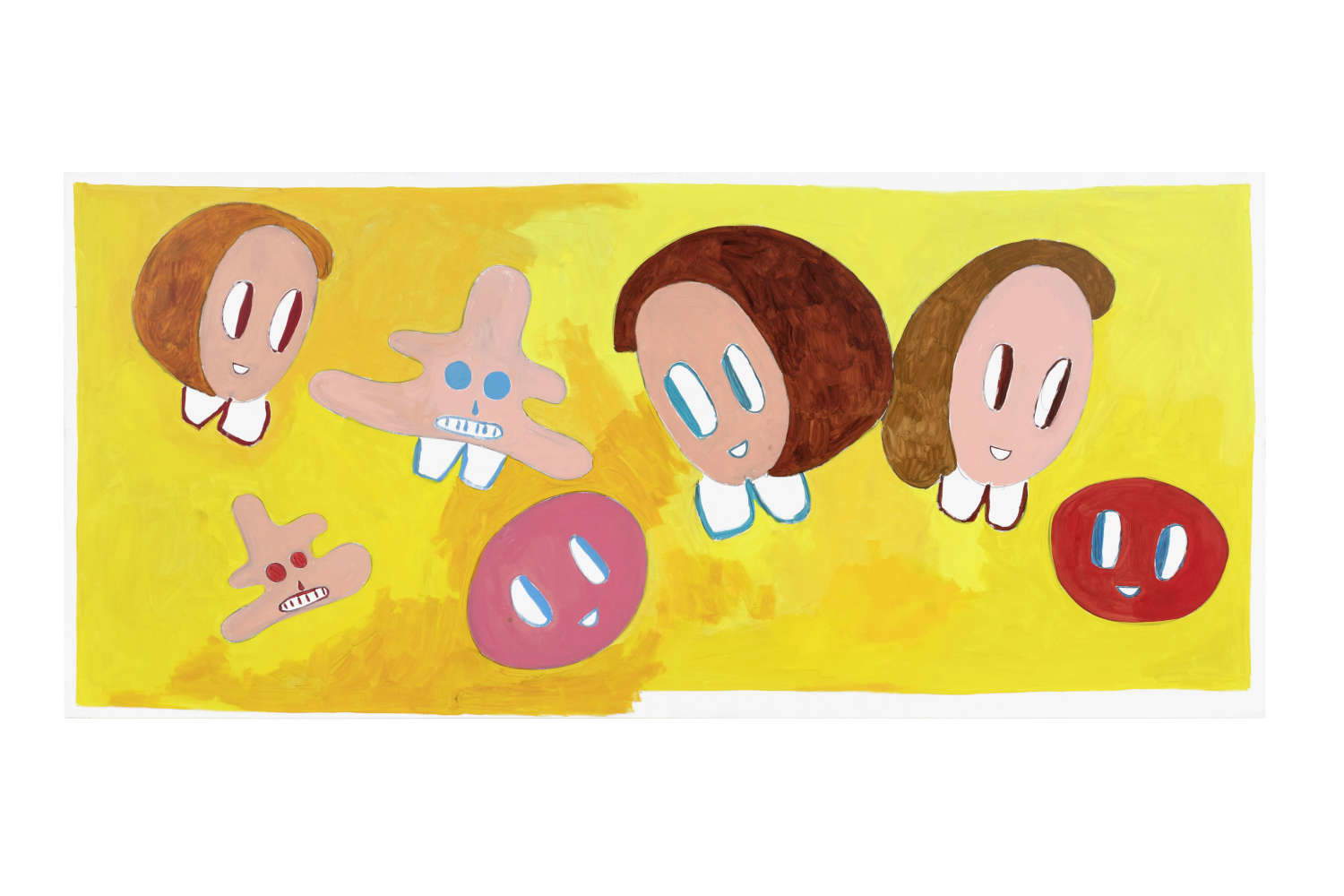
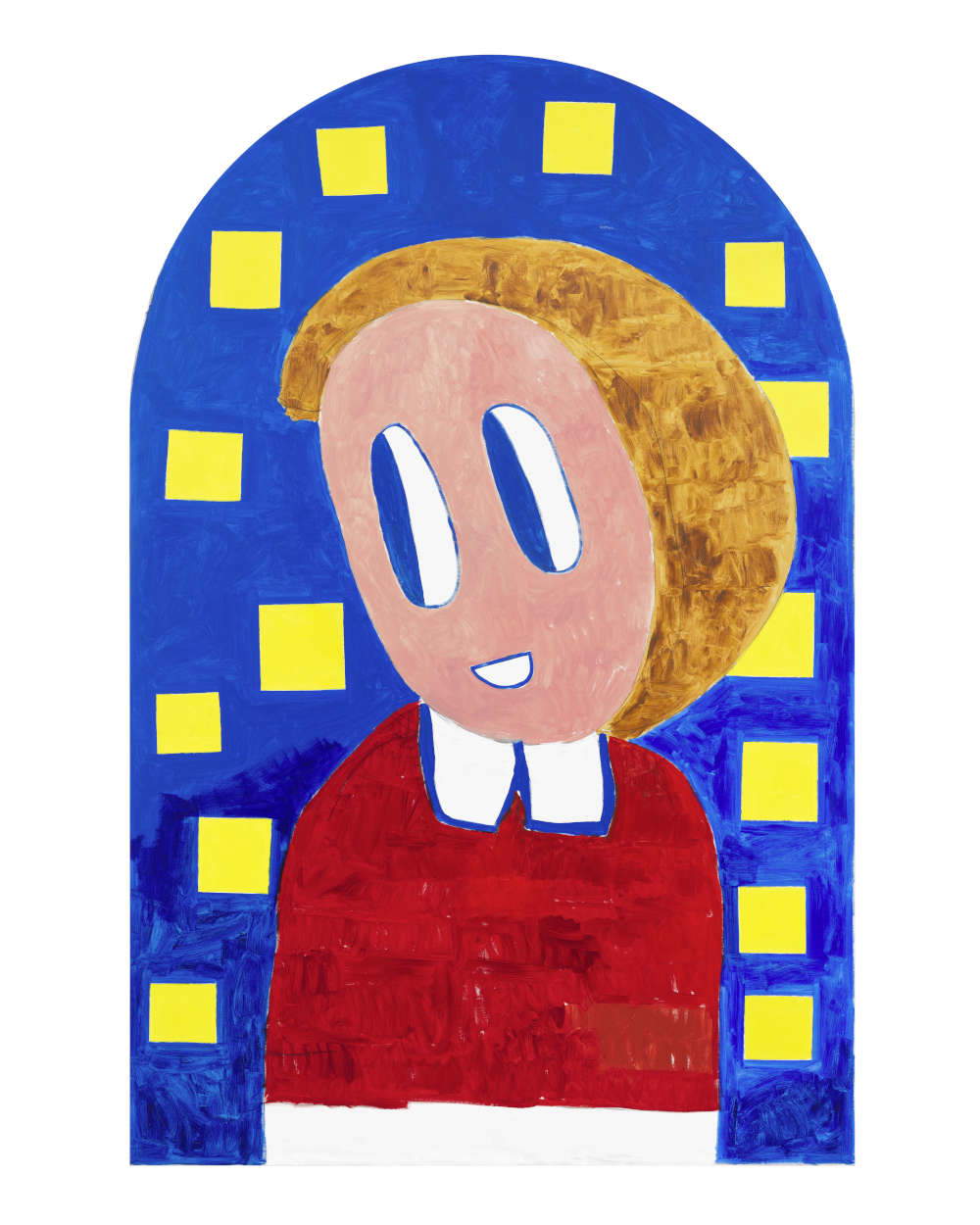
The artist.
André Butzer’s work interweaves a knowledge of the masters of the early 20th century with a deep interest in communication, comics and the spread of popular culture in Europe in the second half of the 20th century, resulting in a personal blend of high and popular culture. Beginning in 1999, Butzer has shaped an artistic universe that, while passing through different phases, presents itself as a cohesive and organic maturing process.
From the initial expressionism emerges a growing trend toward abstraction, periodically interrupted by distinctive, serial figurative elements. After the phase of the N-Paintings (2010-2017), representing the utopian NASAHEIM, the primordial place of all pictorial and poetic expression, we witness the return of his characteristic characters, including The Woman (The Woman), the Man ofShame (Man ofShame ), the Friedens-Siemens and the Wanderer (Wanderer). These characters, while portraits of the artist himself, also take on a universal dimension, beyond time and space.
For example, the Wanderer recalls the iconography of the traveler found in literature and art, with references ranging from Hölderlin and Friedrich to the German sphere and beyond. The complexity of Butzer’s artistic universe finds a place in Science Fiction Expressionism, a term coined by the artist himself, which blends figuration and abstraction in a constant balance between analysis of the present, reflection on the past and foreboding of the future.
André Butzer (Stuttgart, 1973), lives and works in Berlin. Major solo exhibitions include those at The Page Gallery (2023); Museo Nacional Thyssen-Bornemisza, Madrid (2023); Kunstverein Friedrichshafen (2023); Friedrichs Foundation, Weidingen (2022); Galerie Max Hetzler, Berlin (2021); Gió Marconi, Milan (2021); YUZ Museum, Shanghai (2020); Museum of the Light, Hokuto (2020); IKOB Musée d’Art Contemporain, Eupen (2018); Växjö Konsthall, Växjö (2017); Bayerisches Armeemuseum, Ingolstadt and Neue Galerie Gladbeck (2016); Kunstverein Reutlingen (2015); Künstlerhaus - Halle für Kunst und Medien, Graz (2014); Kestnergesellschaft, Hanover and Kunsthistorisches Museum / Theseustempel, Vienna (2011); Kunsthalle Nuremberg (2009); Kunstverein Ulm (2005) and Kunstverein Heilbronn (2004).
André Butzer’s works are part of the collections of: Art Institute of Chicago; University of Chicago,Chicago; Children’s Museum of the Arts, New York; Faye G. Allen Centre for the Visual Arts, University of Washington, Seattle; Rubell Museum, Miami; LACMA Los Angeles County Museum of Art, Los Angeles;Marciano Collection, Los Angeles; MOCA Museum of Contemporary Art, Los Angeles; Pinakothek der Moderne, Munich; Contemporary Art Collection of the Federal Republic of Germany, Bonn; Friedrichs Foundation, Weidingen / Bonn; Deichtorhallen Hamburg - Falckenberg Collection, Hamburg; Paula Modersohn-Becker Museum, Bremen; Hall Art Foundation, Reading / Derneburg; Hamburger Bahnhof, Berlin; Nationalgalerie / Hamburger Bahnhof - Museum für Gegenwart, Berlin; Kupferstichkabinett, Berlin; Miettinen Collection, Berlin; Hölderlinturm, Tübingen; IKOB Musée d’Art Contemporain, Eupen; Collection of the Country Tyrol; Carré d’Art, Nîmes; Museo Nacional Thyssen-Bornemisza, Madrid; MONA Museum of Old and New Art, Tasmania; YUZ Museum, Shanghai.
 |
| Florence, at the Museo Novecento, André Butzer's major exhibition tracing the artist's career |
Warning: the translation into English of the original Italian article was created using automatic tools. We undertake to review all articles, but we do not guarantee the total absence of inaccuracies in the translation due to the program. You can find the original by clicking on the ITA button. If you find any mistake,please contact us.



























